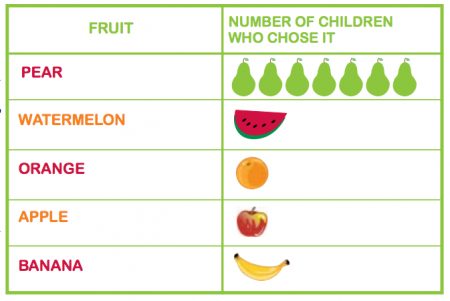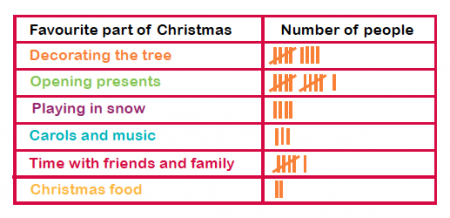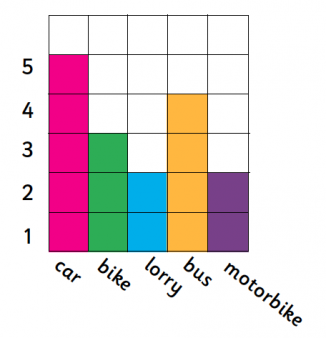Year 2 Home Learning - 1st February 2021
Date: 31st Jan 2021 @ 10:01am
We hope you had a lovely, relaxing weekend.
This week we are celebrating ‘Children’s Mental Health week’. There will be activities daily, throughout the week so please take a look under the PSHE section at the end of the blog.
Why not give yourself a target to achieve by the end of the week? Maybe use lead-ins to every letter, have a go at a Maths challenge or do 60 minutes of physical activity every day. Let us know on Friday if you achieved your target.
Remember, some work will be set on Seesaw this week so please read this post carefully. This can be accessed by logging in and navigating to the family announcements section. We know home learning is very different to school but try your best to stick with it. Try to remain resilient and persevere with all the tasks set. Little and often is always the best policy.
Why not try a more relaxing start to your morning. 50 minute compilation of yoga adventures, mindfulness and guided relaxations - with themes around courage, thinking positive and staying peaceful. 🌈 https://www.youtube.com/watch?v=9JI01thiHYI
Or you could carry on doing the Joe Wicks daily session 😊 https://www.youtube.com/channel/UCAxW1XT0iEJo0TYlRfn6rYQ
We will explain the structure on here each day but please refer to the additional uploaded documents for each specific lesson guidance and resources.
Joke of the day
Why did the teddy bear say no to dessert?
Because she was stuffed.
Reading
It is ESSENTIAL that children continue to read every single day. This should be for a minimum of 20 minutes.
Write, or draw pictures, from anything you’ve read! Big writing and pictures are even more fun. For example, use an old roll of wallpaper to make a treasure map with clues from the stories you’ve read together.
Oxford Owl – This resource has an exciting range of carefully levelled books to help children learn to read, and love to read.
If parents and children decide to use this resource, we ask they access phase 5 books. Go to https://www.oxfordowl.co.uk/ and select ‘my class login’. Scroll down to the red box ‘eBook Library for Letters & Sounds’
Username: sto2
Password: 1234
Corner stones have released some free reading resources
Resources for questioning your child while they are reading
Maths
Counting and Times Tables
Counting in 2’s – Can you count forwards to 30? Challenge – Can you count backwards from 30?
2 Times Tables – Listen to this 2 times table song: 2 times table song
Play hit the button and select 2 times tables – hit the button
Play the Daily 10. Select multiplication and then select 2 times tables. Set the timer so you get quicker each time – Daily 10
Can you write out all your 2 times tables up to 12 in your home learning journal?
This week we will looking at statistics and data handling. From pictograms to line graphs, children learn a lot about collecting, organising and presenting data in primary school maths. This week we will look at how you can help your child get to grips with basic statistics at home. Data handling at primary school means gathering and recording information and then presenting it in a way that is meaningful to others. It is now referred to as ‘statistics’ under the 2014 curriculum.
In Year 2, children are shown pictograms, tally charts, block diagrams and tables.
For example, they might be shown this pictogram which shows the favourite fruits of a group of children:

They might be shown a tally chart like the following, used to record the favourite parts of Christmas:

This block diagram or graph shows what kinds of vehicles were seen on a road by one child in the course of half an hour:

They may be shown a table like the following which shows the favourite sports of 50 children across a year group:
|
SPORT |
PREFERENCES |
|
Football |
20 |
|
Rugby |
7 |
|
Cricket |
10 |
|
Golf |
5 |
|
Hockey |
8 |
Can I use a tally chart?
Today’s maths lesson can be found on Seesaw. Please watch the video carefully pausing to attempt certain tasks when prompted by the teacher.
Worksheet – Go on a shape hunt around your house and see what different shapes you can find. Make a note of this in a tally chart.
Once you have completed this, have a go at the answering the following questions.
How many different shapes did you try to find?
How many objects did you find altogether?
Which is the most popular shape?
Which is the least popular shape?
Optional activities – Help the RSPB keep track of what birds are around during Big Schools' Birdwatch with the attached survey sheet. Go for a walk in your local area or look around your garden. How many birds can you spot? Make a tally chart on the survey sheet.
Tally chart game - https://www.softschools.com/math/data_analysis/tally_chart/
Sumdog
Sumdog can be played from home, as well as in the classroom. To log in from home, students use the same details as they do in class.
Log in at www.sumdog.com
Additionally, students can access Sumdog via the app, which are free to download and play. In both cases, they'll need an internet connection.
Sumdog challenges
Multiplication – x2, x3, x5 and x10 tables
Maths – Statistics
Spellings – adjectives with the suffix -er and -est
English
Please see the attached English lesson for more details.
Phonics and Spelling
Phonics play have made their website free to use throughout January. Login -> select the resources tab -> select phase 6 phonics and have a play!
You may log in with the following details:
username: jan21
password: home
This week we will be looking at adjectives with the suffix -er and -est.
Adding -er/-est
We make the comparative or superlative forms of short adjectives by adding -er or -est, for example: hard, harder, hardest
Spelling Rule
Just add -er or -est to the end of the adjective, for example:
- quick, quicker, quickest
- great, greater, greatest
- full, fuller, fullest
Exceptions
(note: C=consonant; V=vowel)
|
If adj. ends in |
do this |
and add |
Examples |
|
C + y |
change y to i |
er |
happy |
|
C + e |
remove e |
late |
|
|
C + V + C |
double last letter |
hot |
|
|
Note: adjectives ending in -l are regular, except: |
|||
Please view today’s PowerPoint presentation and complete the comparative adjectives worksheet attached to this post.
Science
Resources
Watercolour paint or thinned poster paint
Paint brushes
Pieces of card
Wax crayons
Variation of experiment
Tinfoil
Vaseline
Cast you minds back to lesson 3 and the effect of rubbing wax on a piece of paper.
Can you make a list of reasons why some materials need to be waterproof?
We now know that wax is waterproof and so it doesn't absorb water. When the paint touches the wax, it rolls off and gets absorbed by the surrounding paper. So the lines of your painting will be waxy with no paint, because the paint can't be absorbed there.
Practise on a scrap of card or paper to explore the resisting and absorbing qualities of the wax crayon and paint. You will need to draw lines with the wax crayon and then paint over and around those lines, watching the paint being absorbed into the paper but not where the crayon lines are.
Then give use a larger sheet of card or paper to do your design. There are many variations of wax resist painting, some more complex than others.
Useful website - Create an Easy Watercolor Wax Resist Painting (craftsy.com)
Another variation of this experiment
Have a go at resist printing by spreading a layer of Vaseline onto a sheet of tin foil (as if to make an ink pad), carefully pressing a small object (leaf, for example) into the Vaseline and then printing it onto the paper. The Vaseline on the paper should act like wax when paint is applied. This is more advanced than the printing with paint because it requires care when applying both the Vaseline to the object, and then the paint around the Vaseline.
PSHE – ‘Children’s Mental Health Week’
Please find attached documents each day all about promoting children’s mental health and wellbeing.
Today’s activity includes looking through the Assembly powerpoint introducing the week. Then start your Wellbeing journal and have a go at the colouring sheet.
We hope you have a fantastic week of home learning,
Year 2 team.
 St Oswald's Catholic Primary School
St Oswald's Catholic Primary School